
Home |
Up |
Next |
Prev |
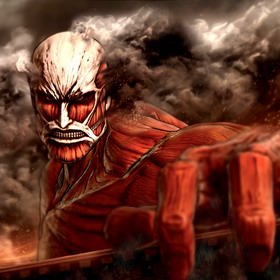
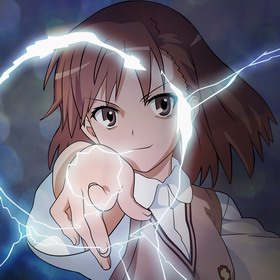
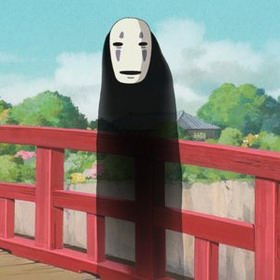
3 famous and very different anime: Attack On Titan, A Certain Scientific Railgun & Spirited Away
Introduction
Unless you have been living under a rock in the wilderness you will have heard of "anime" in the last few years. Actually, as of 2021, I happen to know that most people over 40 actually DO live such a bizarre existence as I have lost count of the number of blank looks I have received on mentioning the word. The insular aging hermits aside however, it is clear that anime is occupying a greater slice of Western consciousness every year. This is evidenced by mainstream streaming services like Netflix who offer an extensive catalogue for you to binge on, including a wide variety of classics, as well as established pure anime streaming services like Crunchyroll, Funimation and AnimeLab.
If you are aware of the term but aren't addicted you may have seen a few series in your childhood, like "Pokemon", "Macross", "Evangelion" or possibly "Naruto" or "One Piece". Perhaps you've seen a few pieces by the great Hayao Miyazaki. If that's all you've seen you have no idea of the depth, variety, subtlety and complexity of the medium which has grown enormously over the last 2 decades. If you think anime is just teenage boys fighting against evil then you have another think coming.
If you have just dipped your toes in the water and waved them around a bit you are probably mystified by questions like: Why are so many series set in schools? Why are most of the characters girls? Why do so many of the girls have large breasts? What is that prepubescent girl doing teaching the class? Why are there so many series about incest? etc. Stay calm young padawan, it is for you that I have written this guide and I shall endeavour to answer such questions.
If you are a long-term committed otaku tragic with 10,000 episodes to your credit there is probably little I can tell you. You might however find points to disagree with me on and then you can go ahead and roast my bad taste and shallow misperception on your favourite forums. Or you might find a point and think: Gee why didn't I think of that? Anyway. Knock yourself out you weeb!
I don't own any figurines. I don't own a dakimakura. I don't cosplay. I don't speak Japanese. I don't know any kanji. I do actually venture out into the real world and I do have real life friends and family that I see in the flesh from time to time. As such I fail to make the grade as a hard-core otaku. However: I do have a real love for the medium to the extent that I have barely watched anything real for years, I have seen around 2,000 episodes and I have watched most of the anime that are regarded as classics, which includes at least some of all the various genres. On approaching the 2,000 episode milestone I began to feel that I did finally have a grasp of this amazing artform and I felt entitled to write about it.
Some of my analysis might be a tad revolutionary and not everybody is going to agree with me but what the hell: if it's what I think I'm just gonna come right out and say it!
What Is Anime?

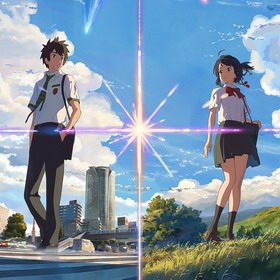
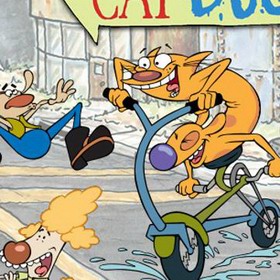
The difference between American and Japanese animation: Batman, Your Name & Catdog
If you are aware of the term "anime" you may be aware that is simply means "Japanese style cartoons". Of course it used to mean "Japanese cartoons" but like every new invention it isn't very long before every damn country starts trying to make it, (with varying degrees of success...). Japanese style cartoons are very different from American style cartoons and one instantly knows which style one is watching.
American style cartoons are made for children and usually lack artistic depth. The characters are highly stylised, simply drawn and the backgrounds likewise. They may be action pieces like "Batman" or "Superman" for boys or they may be cute fantasies for girls like "Cinderella", "Aladdin" or "My Little Pony". The protagonists invariably exhibit a very correct morality in line with the codified Christian ideals of the USA.
Japanese style cartoons on the other hand are not necessarily made for kids and over the last few decades have developed a wonderful artistic depth. The backgrounds are often beautifully coloured and detailed and the characters also have an attention to detail that is missing from the cheap American productions. Japanese animators have really mastered the art of making the hair look right and move right for example. Anime characters are drawn in a wide variety of ways though: some are almost as cheap and stylised as Batman, some are as bizarre as Nickleodeon productions, some are way out in their own original modern art style but generally most anime adopt a close-to-real approach. There are differences though: typically the eyes are much larger than normal although this is not true of all series.
But it is not only the visuals that are more detailed and interesting in the Japanese style: It is also the stories and the characters. Unlike the USA, the stories behind anime series are not tied by big studios to the largest demographic, so they do not have to be safe and moral with a happy ending that supports the status quo. Instead they can be bizarre, break every moral known to man and end in tragedy... or they can be a warming slice of ordinary life that ends in a beautiful marriage... or they can be something different entirely... In any event you get a far greater range of stories than you do from American series, with a great deal more imagination, which are consequently a lot more interesting.
Anime characters can also be likewise more interesting without modern western morality. How can America produce an incestuous love story or a story where sexy succubi are a force for the good or a story where teacher and student fall in love or a story where a boy is surrounded by a harem of beautiful girls all vying for his affections or a story where EVERY schoolgirl walks around in a miniskirt? Ans: They can't!
As I will explain: Anime is a substitute for real life. It needs to go to all places in the psyche of a human being in order to make a satisfying alternative. You can't do this if you are hide bound to some restrictive, politically correct morality or world view. It is in striving to fulfil this great need that anime finds the power to create mind-altering experiences that really satisfy and keep you coming back for more.
Much of anime is sexualised to some degree; some greatly, some barely at all, however Japanese law forbids showing the genitals or explicit sexual acts in standard anime so there is a separate category for pornographic anime that is called "hentai". The two are clearly delineated and until 2020 there was no blurring of the line.
Where anime is the word for Japanese style cartoons, "manga" is the word for Japanese style comics. Most anime are adaptations of manga. Manga are normally black and white and printed Japanese style back to front and right to left. Like anime, manga is very popular in Japan and many people prefer it to anime. Some manga artists like to make their own adaptations of popular manga, often pornographic adaptations and these are called "doujinshi".
In short: Anime is beautiful, Anime is varied, Anime is challenging, Anime is stimulating, Anime is interesting, Anime is satisfying and Anime is addictive. Anime is also vast: By 2021 there were in excess of 10,000 titles available, most of which were entire series.
The Real World Sucks!
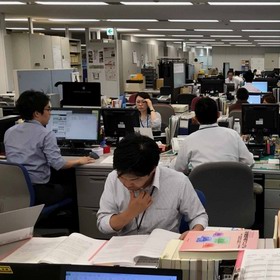
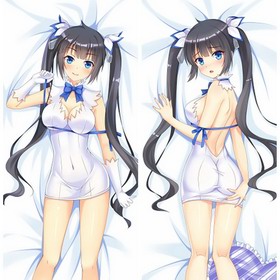
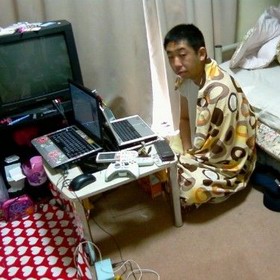
A Japanese office, a dakimakura (front and back) & a hikikomori
In order to understand anime you first need to understand what life is like for the Japanese:
Many Japanese children grow up with their parents away at work much of the time, including many nights. They don't always have the deep pool of shared experiences with their parents that those of us in the West take for granted. They are often alone in the house and their main contact with people is at school.
At school they make friends and still have free time to relax and this then becomes their happy memory that they seek to return to when their shitty adult life gets them down.
Once they graduate they line up with all the others in a mad scramble to get a job. It's a desperate situation as if no company picks you up your life is basically ruined. Once established in a company you are pretty secure but there are problems with Japan's harsh work culture, most obviously, the ridiculous hours that employees are expected to work! It is the custom for Japanese workers to stay at work until the boss leaves, which could be 9pm and if he wants to go to the pub you have to go as well and pretend to like his stories and you have to get drunk with him. Such wage slaves might not get home until midnight which leaves NO time for relaxation, friends, family or spouses.
Because there is no time left in the day many young adults don't have the opportunity or energy to make friends or date. Because of this they often don't marry and many Japanese are still virgins at 30. This results in a reduction in the birth rate which is down to 1.37 births per woman at 2021, well short of that needed to preserve population numbers.
Like most east Asian nations Japan's population tend to be inoffensive, obedient and conforming. This is drilled into them from childhood and although there are a few rebels most people are sheep. Some males become so inoffensive that they are incapable of taking any initiative, for example they can't even ask a girl out on a date. Such people are termed "herbivores" and they are unlikely to father children. The only chance for such men to find sexual happiness with the opposite sex is through the fantasy world of anime where they are not required to take any initiative.
Most young adults live alone in a flat, work long hours and lack friends, partners and family. They are not particularly well paid and things are expensive so they are not able to do everything they want to. In short: Their life sucks! You can easily see this by the Japanese suicide rate which is among the highest in the world. In 2005 it was 25 people per 100,000 population, (most of whom were male). About double Australia's rate at the time. Then there is the phenomenon of Jouhatsu where 100,000 people a year simply go missing in order to escape their miserable lives. Most of these are subsequently found but it does indicate an unhappy society.
For many Japanese, life is so putrid that they just want to get away from the real world as far as possible and retreat to a place that is safe and comforting. That place is anime land where they can dream about their idealised school life: the friends they had, the girls they wished they'd kissed, the little sister they never had, the caring parents they never had, the wonderful talents they never had, the courage and determination they never had, the meaningful life they never had etc.
People who become addicted to anime and devote their lives to it to the exclusion of all else are termed "otaku". Apart from watching anime and reading manga they may plaster their walls with their favourite characters, cover their shelves with figurines and sleep with a full length pillow called a "dakimakura", covered in a picture of their favourite character. Their favourite anime girls are their "waifus" (Japanese corruption of "wifes"). You can even get a waifu app for your phone where you can talk to her and pretend that she is real.
People who take their rejection of the real world to the final stage either quit school or lose their jobs and retreat to their rooms entirely, never to leave. Such people are termed "hikikomori" or "shut ins" and are often looked after by their mothers who supply them with a room, power, food, laundry etc. It is estimated that there are around a million hikikomori in Japan with another million or so on the verge of being shut in. That's about 2% of the population. Quite significant and indicative of a serious problem in their society.
When you understand how bad life is for many adult Japanese you can then understand why anime goes to all the places it does and why it is so widespread and successful in Japan. This does not mean that all adult Japanese are otaku, far from it, but there are not many who eschew the medium entirely.
The West is not yet in the same deplorable position as Japan BUT we are moving toward it as the number of depressed and dysfunctional young adults can attest. The rise of otaku culture in the West also demonstrates that there are now many in the West who have had enough of the real world and just want to get off.
Why So Many Anime Are Set In Schools
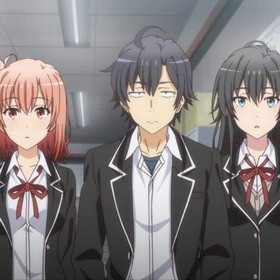
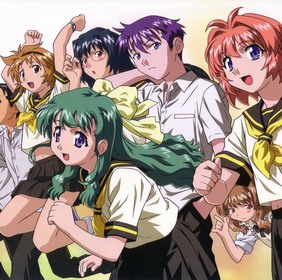
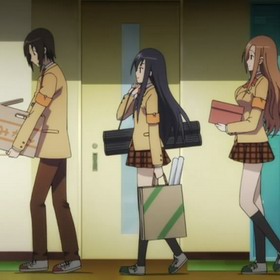
Most anime are set in some sort of school
There is a popular misconception that anime is made for teenagers since most of the series are set in schools and most of the characters are teenagers. On the surface this seems plausible but when you dig down a bit you will see that many of the themes are a bit too adult for teenagers and often the main characters are seen doing things that only adults would do.
There are various examples where high school students embark on a full sexual romance with their teachers, "Domestic Girlfriend" for example. Certainly such things are not unknown in the real world but in particular, a full romance between a schoolboy and a female teacher is very rare. It may be every schoolboy's fantasy but it barely happens in real life and the anime schoolboys that do it look and behave like adults, not schoolboys. In short, what you are seeing in these shows is an adult dressed up as a schoolboy.
Then there all the many series where school kids do adult jobs: Consider the series: "A Certain Scientific Railgun" where 13 year old schoolgirls do the town policing. That's just not the kind of thing schoolgirls of that age want to do whether they are capable of it or not. Consider "High School DxD" where a "schoolgirl" is a high level demon who runs the school, stealing the souls of students to form her army fighting fallen angels. She doesn't look like a child and she certainly doesn't behave like one. What you are seeing is adults dressed up as a students.
Then there are the series with characters that start out as school kids but quickly turn into adults. "Attack On Titan" and "Darling In The FranXX" are good examples. Kids don't turn into adults in one year in the real world. They turn into adults in the anime world because the creators find portraying kids all the time too limiting.
Yes, there are some anime set in school that ARE aimed at teenagers. "My Hero Academia" for example or "Love Live". The teenage market is significant and the studios do target it but the adult market is bigger and that is the prime target. Many series are made to appeal to both teenagers and adults. It is important to bear in mind that ALL the people involved in anime production are adults and most of the important staff are over 30. THEY are far removed from childhood and will do everything they can to put stuff into the series that THEY find interesting. That stuff is adult stuff.
"So if an anime series is made for adults, why is it set in a school?" you ask. To find the answer you need to remember what adult life is like for many Japanese: It sucks and they want to escape it, NOT be reminded of it! They want to escape to their teenage years where they had no responsibility, where the girls were cute and fresh, where they had friends, free time and didn't have to work. So the obligatory high-school is the door that lets them escape. Once they are through the door they can forget the stresses and disappointments of adulthood and indulge in whatever adult fantasy they like, whether it be having a harem of pretty girls, fucking the sexy teacher, fighting super-villains, piloting a mech, casting spells, being a sports star or just hanging out with friends.
The following is critical to your understanding and enjoying anime: Unless the series is clearly aimed at teenagers alone, THE SCHOOL IS AN ILLUSION, forget about it. Likewise THE CHARACTERS ARE NOT THE AGE THEY APPEAR TO BE. Just pretend that the characters are really adults that are drawn as teenagers and that the school is really just a workplace and the school desks are really work desks and the illusion will fall from your eyes and you will see the show for what it is.
Why Do Most Characters Look European?
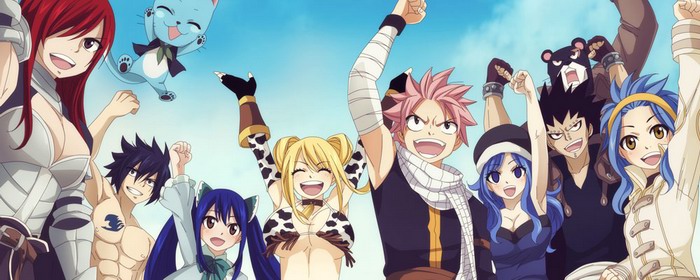
The main cast of Fairy Tail, how many look Japanese?
This may be a controversial view but I believe that Japan since the 2nd Word War has a deep seated inferiority complex. Not only were the forces of the Emperor soundly defeated by the Caucasian Allies but they were smashed with atomic weapons and then ruled for a while by the Americans. To make matters worse the Americans brought with them an advanced consumerist culture of fast food, Western clothing, Western popular music, Western sport, Western schooling etc that completely stunned the beaten Japanese who had no alternative but to go "Wow! They are so much better than us!".
As we know: Japan pulled itself together after the catastrophe that was WW2 in record time and went hell-for-leather to catch up with the technology and culture of the West, primarily that of the USA. This they succeeded in doing by 1980, yet the inferiority complex remains. Why?
The impressiveness of Western culture is not just in the technology and coolness of the USA, it is also in the shared history and culture of Europe stretching back to armoured knights on horseback; a similar situation to feudal Japan but with better armour and better weapons. This is where the Europeans became superior and achieved the age of enlightenment while Japan remained static, mired in petty rivalries and stifling conservatism.
While Japan was doing nothing the great geniuses of Europe discovered calculus and advanced mathematics, elucidated the laws of classical physics, wrote the great operas and symphonies, wrote the great poetry, plays and literature, painted numerous masterpieces in a range of genera, dethroned religion, developed democracy, standardised education, mastered medicine, invented the telescope, the steam engine, the train, the car, the gun, the computer, the supermarket, the telephone etc. The great powers in Europe also built great edifices in STONE such as castles, cathedrals, stadiums, apartment blocks, offices, schools and universities.
Yes! Japan is as old as Europe BUT it doesn't have as much to show for it: Just a bunch of wooden shrines and wooden castles, some nice paintings in a couple of narrow, restricted styles, some poetry, sushi and miso soup. Let's face it "Noh" theatre is bizarre and irritating, Japanese traditional musical instruments are inferior to those of the West, as are their traditional musical compositions, sake is pretty ordinary and Japanese traditional clothing is absurdly impractical. As for Japanese writing: it is a bizarre illogical mess that everyone agrees is a complete pain in the arse.
Yes! Japan has now caught up with everything: it has freeways, office blocks, universities, fast food chains, J-Pop, world class industries, business suits, bullet trains, internet and democracy but it can't catch up with the debt of history. Japanese people are subconsciously aware that it wasn't Japan that invented all these things, it was the Europeans and their colonies, and they are sadly aware that they still haven't contributed much original to global culture and technology.
It is because the Caucasians of Europe invented the great bulk of modern culture that the Japanese still idolise them to this day, although they are unlikely to admit it. This manifests in the look of the characters in almost all anime and in the settings of some anime. There are some characters that look Japanese but they are a minority and some series have no one that looks Japanese. Most bizarre is that most of these Caucasian looking characters have Japanese names and are usually attending a Japanese secondary school!
The Japanese animators and mangakas deliberately draw European characters because that is what the Japanese readers and viewers want to see. Seeing characters like those in American and European movies makes them think the anime or manga is "world-class"; seeing purely Japanese characters would make the anime or manga appear small-town or second-rate.
The reality is that the Caucasians have been great! They have the runs on the board! Japan has been a 1st world country and a world economic power for decades but will always have that feeling of inferiority until they are able to make a great contribution to world culture and technology. The same situation is true for all of Asia and this is especially the case for China who are currently building an enormous psychological problem for themselves, thanks to the egos of the CCP, who insist that traditional Chinese culture is the equal of the West, all the while wearing business suits, eating McDonalds, drinking coke, driving sedans and watching game shows on TV.
Ironically, it is in the technology and art of anime, where Japanese looking characters are rare, that we see Japan's greatest contribution to world culture. Sure, the Japanese didn't invent cartoons but they certainly have developed them, taken them to places that the Americans have not and changed world culture along the way!
Why Do The Characters Become Small And Childlike At Times?
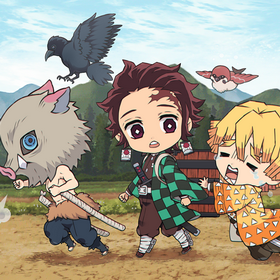
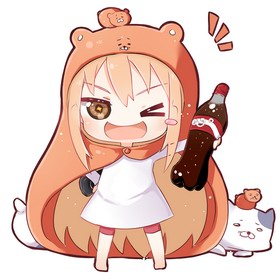
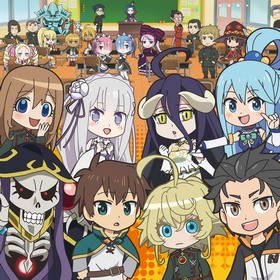
Chibi from Demon Slayer, Himouto! Umaru-Chan and Isekai Quartet
The reversion of otherwise normal cartoon characters to little stubby children is common in the art form and characters in that form are called "chibi". Chibi are cute and are not to be taken seriously.
Chibi are often used for comedic effect when dealing with some extreme or embarrassing emotion. For example when a girl is embarrassed she might revert to a chibi and start yelling and hitting another character. Little stubby children getting angry is always funny. This allows the viewer to experience humour at the scene instead of being uncomfortable with the violence.
Chibi are also used in a few series at the end of episodes for parody, enhancement or meta-discussion of the content you have just seen. The viewer relaxes, seeing the show and characters in a pleasant new light and any seriousness is washed away. Isekai Quartet is a show where the characters are already chibi but they manage to achieve further diminution at the closing by the use of pixelation and an 8 bit palette.
Why So Many Anime Characters Are Girls
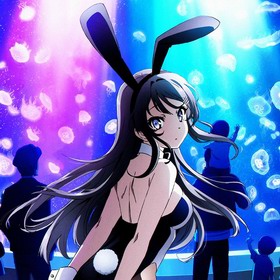
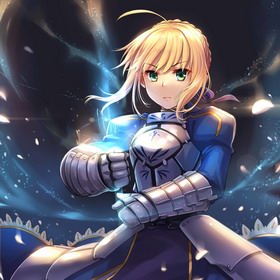
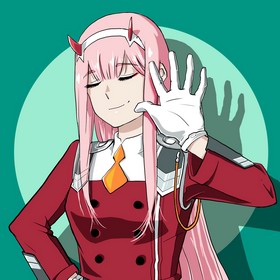
A selection of popular choices for "Best Girl": Mai from Bunny Girl Senpai, Sabre from Fate:Zero and Zero Two from Darling In The FranXX
Anime is primarily created for males, whether they be boys or men or a bit of both. Yes, there are some series that are created for females but most are for the guys! This is not to say that women don't enjoy anime, they do, but not as much as the guys and not so much the series where the women are sex objects, which is many... Typically women only represent about a quarter of the market.
You might think that shows for males would feature mostly males such as "The Avengers", "The Magnificent Seven" or "Dirty Harry" and indeed, there were and still are, many anime in that mould, such as "One Piece", "One Punch Man", "Legend Of The Galactic Heroes" and "Afro Samurai". However, around the time of "Neon Genesis Evangelion" it began to be seen that males like to watch sexy women doing manly things, such as piloting a giant mech. This idea began to be used more and more until it spawned the phenomenon that is "moe". Moe is the obsession with cute anime girls. Moe became so strong that there were as many or more female compare to male characters in anime as a whole by 2020, despite the fact that 3/4 of the viewers were male.
As I have mentioned before: anime is a magical land where all your fantasies can come true. In the case of depressed withdrawn losers who can't get a girl or are repelled by the assertive, demanding women that are out there in the real world, their fantasy girls tend to be beautiful, submissive, (except for the tsundere), sweet and sexy in the extreme. What's not to love? So naturally, anime creators put such girls and women into their creations to please their customers.
Now what is better than one beautiful, sexy woman in your fantasy world? Well 3, 4 or 5 of course! And thus was born the anime "harem". Harems appear in many anime and vary greatly in the degree of romantic attraction. There are some such as "Rent A Girlfriend" where the harem is whole point of the series and all the girls are madly in love with the protagonist and he with one or more of them. Then there are some such as "Food Wars" where only some of the girls are in love with the protagonist and the protagonist is not interested in romance. Finally there are others such as "Fullmetal Alchemist" and "Fairy Tail" where there are plenty of sexy women to look at but they are not all chasing around the central male character.
Sexy women doing ordinary things is great for romance anime but they can be used in other genres too. For example in action anime like "Gurren Lagann" they could be sniping opponents or piloting a mech. In RPG anime such as "Sword Art Online" and "KonoSuba" they could be casting spells or wielding a sword on the front line. In business anime like "Shiro Bako" they could be handling production for a product line, managing a team of workers. This doesn't mean that Japanese men want women doing all the good jobs in reality! It just means that men like to watch young, sexy women on screen, it doesn't matter what they do. This is just a fantasy!
The strong presence of female characters in male-targeted anime is not a statement of feminist support, quite the reverse. They are purely there to satisfy the fantasies of the male viewer. Of course female watchers don't need to know this and they can enjoy seeing a powerful feminist image up there on the screen. It's a win/win for studio producers!
In the case of female-targeted anime of course any or all of the above may be reversed.
Large Breasts & Fan Service
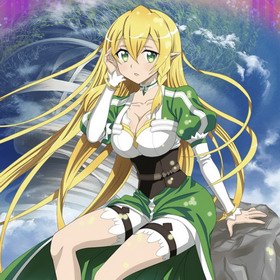
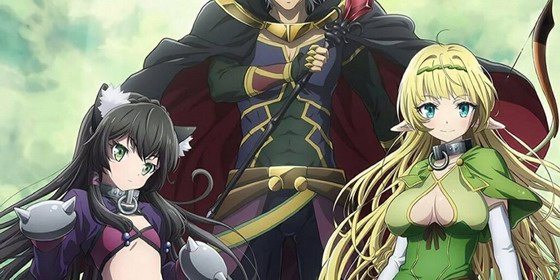
Large breasts or small? Take your pick: Leafa from SAO and Rem & Shera from How Not To Summon A Demon Lord
As I have mentioned before: anime is a fantasy land where your every wish can come true. In the case of teenage boys and men a large chunk of those wishes are sexual. It is the job of anime creators to give the fans what they want and in the case of most teenage boys and men that includes lots of pretty girls and women with fashionable clothing, beautiful hair and large breasts.
Actually, the truth is that males vary in their tastes so that although most males like large breasts there are some that prefer smaller ones, some that want absurdly large ones and a few that like their women completely flat. So it that in a typical male targeted anime you will see that range of breast sizes although most anime girls and women will have larger breasts than their real life counterparts.
Giving the fan what they want doesn't stop at the design of the female characters, the fans want to see their waifus naked or if that is not possible they want to see them in their underwear. The fans want to be titillated with panty shots, breast jiggling, breast contact, naked bath shots, bum shots etc. Despite the fact that such inclusions have little to do with the story the creators are happy to provide them as a service to their fans and hence such inclusions are called "fan service".
The amount of fan service varies enormously from one anime to another. There are some like "High School DxD" and "Triage X" where fan service is the entire point of the show and takes 50% of the screen time, while others like "Attack On Titan" and "Mob Psycho 100" where it doesn't exist at all. There are also special fan service episodes, (typically a trip to the beach), or OVAs, supplied by the studio to cater specifically to the fans' desire to see some waifu flesh.
If the viewer is in the mood for some trashy titillation he will stream the fan service which might get him in the mood for some hentai and when he is done he will simply return to watching anime with less fan service and more story. Anime fan service and hentai provide the male with a substitute for a real woman at a fraction of the price and without any compromise or obligation. What's not to love?
For girls and women who complain that it's all about pleasing the man, they need only watch the anime that are targeted at them and enjoy the unrealistic parade of pretty boys and amusing idiots that fulfills all their needs. If they want more fan service they need only ask and the studios will provide. If they want older content, then again, they need only demonstrate the demand and the studios will be happy to supply.
Wish fulfillment in the anime world is completely unreal. The characters created to titillate men and women are warped versions of the real thing with heavy emphasis on things that are unlikely, impractical or undesirable in the real world. Yes indeed but so what! Anime is fantasy! Anime is entertainment! Anime is an escape from the real world! It's not a crime to fantasise and it's not a crime to enjoy doing it! Sure, if waifus become preferred to the real thing that will reduce the population, but the world is vastly over-populated at present so a large reduction can only be a good thing and if women bemoan that men don't want to marry them then perhaps they should look at large negative factors they load onto their husbands and rethink some of their demands.
Female Character Classes
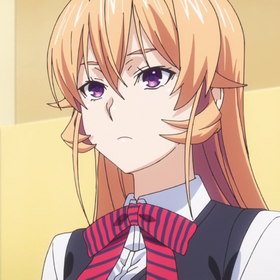
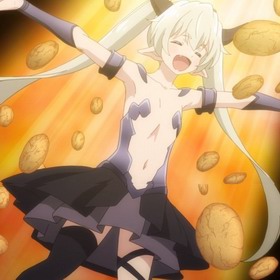
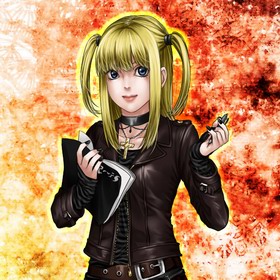
Examples of the 3 most common types - Erina Nakiri (Food Wars): Tsundere, Krebskulm (Demon Lord): Loli and Misa Amane (Death Note): Yandere
So universally pervasive is the moe effect that there is virtually no anime without at least one beautiful girl and most contain many. Certain characteristics have been found to generate appeal and consequently anime girls tend fall into various categories:
Tsundere
Tsundere girls always have some deep seated hatred or suspicion of males and are incapable of being affectionate towards them despite having feelings for them. Typically, whenever those feelings begin to rise the tsundere will physically attack the hapless male usually kicking him to the ground or smacking him down with a fist or blunt weapon. The tsundere can thus avoid having to be nice to a male or show feelings for him, something she cannot bear to do.
Perhaps the tsundere is the personification of a type of bitch prevalent in Japanese society? Perhaps she is the sister who has to be nasty to her brother to avoid admitting she loves him? I don't really know but I do know that a large part of the appeal of the tsundere is that in the end she will be forced to show that she has loving feelings for the male after all and the blush of embarrassment she displays at that time is said to be worth all the pain she has unfairly dished out up to that point.
Some fans say the blush makes it all worth it. Personally I say it doesn't and they are just emotionally defective pains that I can do without. In any event they may be found in most anime and are likely to be around for years to come.
Loli
Loli is short for Lolita and refers to prepubescent girls used with some degree of sexual undertone. There is a loli character in many anime but usually the sexual aspect is played well down. After all, anime is not allowed to be explicitly pornographic and most anime fans find pedophilia distasteful. Nevertheless there is a market for soft-core pedophilia and I guess the loli is for them.
A prepubescent girl without any sexual undertone is not a loli. Viewers of all ages and sexes love to watch innocent little girls because they are cute! (Kawaii in Japanese) Quite often younger sisters are used purely for that purpose but you don't know when you first see that character whether she will suddenly reveal her loli nature later on. Typically, beware of precocious little girls that are knowing...
Examples of the loli may be found in "A Certain Magical Index" where the titular character is a loli that works for the Church of England embodying 103,000 magical texts of the Index-Librorum-Prohibitorum. She is supposedly 15 but could be any age really. She looks about 10 and quickly takes over the hapless hero's bed. She is sometimes also a tsundere and when annoyed bites him savagely on his head. She is also a glutton. There is no suggestion of anything sexual and she is normally swathed in a nun's habit. Despite the sexlessness you know she is a loli because she fits the description. There is also the school teacher in the same anime who is 30 years old and an alcoholic. She also looks about 10. Again there is no sexual suggestion... You have to ask: Why are they there?
Another example may be found in "How Not to Summon a Demon Lord" where the 300 year old demon queen Krebskulm chooses to manifest in the form of a loli, ie about 8 years old. This example is far more sexual as she wears little clothing, joins the hero's bedtime harem and voluntarily wears a slave collar. Nevertheless there is no sex... Presumably this is for the pedophiles and it can be irritating for the non-pedophile to tolerate but you just have to tell yourself that and she is 300 years old after all and the loli form is just her chosen manifestation...
Suffice it say that there are numerous lolis to be found in anime with varying degrees of sexualisation. There will be various arguments about whether such things cross a moral line and where they cross such a line and whether they do any harm and whether they should be banned and how do you define a loli anyway. After all they are only cartoons, not real children and they do not perform any sexual acts in anime.
As for why they exist in the first place, to answer that you have to ask: Why do pedophiles exist? Psychologists don't know but my guess is that pedophilia is the fatherhood instinct gone wrong. It is natural for a man to feel love for young children just as it is for a woman. A man's instinct is to care for and protect little girls, especially if they are his own. Unfortunately, in the case of pedophiles I'm guessing that feeling of fatherly love becomes confused with sexual love and so they get an erection when they feel fatherly love and instead of being nice to the girl they attempt to have sex with her. It's very sad but unfortunately madness is quite common in our world, exists in many forms and there wouldn't be many of us that don't know anyone with a mental disorder.
It's not a crime to have a mental illness. It's only a crime if you allow it to force you to commit a crime. If a pedophile jerks off watching a cartoon loli is that so bad? Will that make him more or less likely to molest a real child? I don't have any clinical studies of this matter at hand but my guess is that he will be less likely. And surely if the pedophile restricts his activities to the fantasy world of cartoons rather than the real world, that is a good result for everyone.
Others
The yandere is the opposite of the tsundere. Instead of denying her feelings for the hero she is obsessed with them and will go to any length to demonstrate the magnitude of her undying devotion. She can also be insanely jealous...
The "dandere" is a stock love interest who is quiet and asocial. She is afraid to talk, fearing that what she says will get her into trouble.
The "dojikko" is a cute girl who tends to be clumsy. She may make mistakes that hurt themselves or others.
The "kuudere" is a stock love interest who is calm and collected on the outside, and never panics but may be hiding her true emotions. She tends to be a leader who is always in charge of a situation.
The "kemonomimi" is a girl with animal features such as ears and a tail, but a human body. One of the most common types is the catgirl. Such creatures are there for cuteness but they also belong to the furry world which is a whole subject in itself.
Other than these there is the usual parade of girls next door, airheads, school council presidents, conniving girls, tall girls, science nerd girls who always wear glasses, snobs, poor girls, fat girls, sporty girls, idol girls, manga girls etc.
Anime Markets
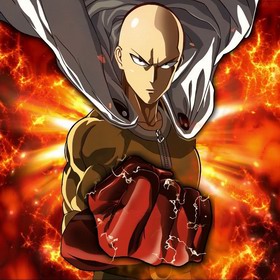
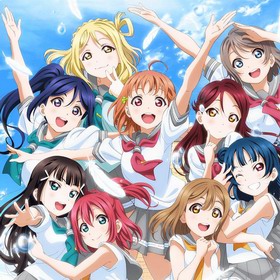
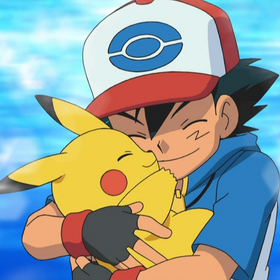
Examples of 3 demographics - One Punch Man: Shounen, Love Live: Shoujo and Pokemon: Kodomo
Anime production and distribution is a business! And, like every business, it needs to know its demographics. There are essentially 5 major demographics that the studios target:
- Shounen - intended for the adolescent male demographic. This the largest target demographic and often targets adult males as well. Shounen genres usually involve action but can include ANY of the popular genres.
- Shoujo - intended for the adolescent female demographic. There are various genres that are of interest to the teenage girl. Typically idol groups, slice of life and teen romances. It turns out that there are also many grown men who are fascinated by the activities of teenage girls. Are they pedos or just dudes exploring the female psyche? In any event they form a sizable part of this demographic.
- Josei - intended for the adult female demographic. Adult women are interested in romance, slice of life and thrillers. This genre provides mature stories embodying those themes. Due to the relative paucity of adult female anime viewers however this category is poorly represented. There ARE examples however if you are willing to search them out.
- Seinen - intended for the adult male demographic. The line between Shounen and Seinen is forever blurred as adults watch the boys' stuff and to some extent vice versa. Is "Attack On Titan" Seinen or Shounen? What about "One Piece" or "Death Note"? In any event there are PLENTY of shows for the adult male.
- Kodomo - Intended for children. There are numerous anime aimed at prepubescent children like "Pokemon", "Totoro", "Beyblade", "Card Captor Sakura", "Captain Tsubasa" etc but again the line is very blurred as children also love the shows intended for older children such as "Naruto", "Dragon Ball Z", "Fairy Tail", "One Piece" etc. Still, it's pretty clear which shows are Kodomo and you won't find too many older boys tuning in to watch "Beyblade" or "Captain Tsubasa".
Anime Genera
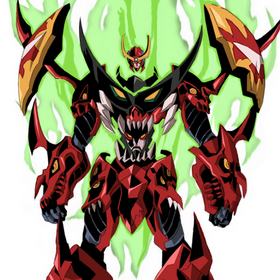
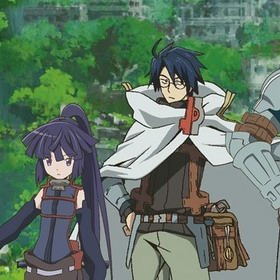
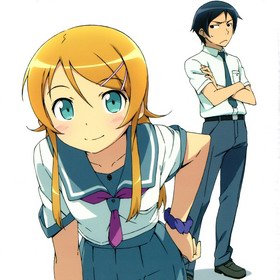
3 of the anime genera - Gurren Lagann: Mecha, Log Horizon: Isekai and Oreimo: Imouto
Anime has grown into a very broad church indeed, boasting a raft of sub genres to cater for virtually everyone... (Certainly for most males). Here is a list of the main ones:
Medieval/Fantasy
The success of RPG computer games such as "World Of Warcraft" and movies such as "The Lord Of The Rings" has thrust the old "sword and sorcery" fantasy genre front and centre into the anime world. There are a legion of such series, some of which rate as isekai and some of which do not.
Examples of those that do not include: "Goblin Slayer", "Seven Deadly Sins" and "Black Clover".
Isekai
Literally "another world". This genre exploded with the advent of "Sword Art Online" an anime that targeted players of MMORPGs. Most isekai begin with the premise that an MMORPG addict is taken from the real world and put into their favourite game. There they can play the game for real instead of only on a screen. Due to the great popularity of such games there is a big market for the genre and the studios rushed to supply the demand.
Examples include: "Is It Wrong to Try to Pick Up Girls in a Dungeon?", "The Rising of the Shield Hero" and "Log Horizon".
Imouto
Literally "little sister". The little sister is a phenomenon in the anime world where she innocently loves her big brother whom she invariably calls "onii chan". The older brother innocently loves back and protects her and looks after her in the absence of their parents who are often away from home due to work commitments or death.
This provides the opportunity for the brother to experience a warming sense of family and for the viewer to vicariously experience the joy of having a sister if he doesn't have one in real life.
Unfortunately this also provides a platform for incestuous love stories. Generally the writers get around the worst of this by having the siblings not be related by blood. It's still frowned upon by society but at least there is isn't the problem of inbreeding.
The biggest problem however is that because the sister is a young girl such love stories provide an opportunity to provide content for pedophiles. There are series such as "Oreimo" which skirt VERY close to the line but stop short of actual pedo fan service or any actual sex, so that one can simply view it as a love story, (albeit rather inappropriate), but sadly there are also series such as "Eromanga Sensei" where the line is crossed and the pedos are served. It's a shame really as "Eromanga Sensei" would have been a perfectly good story if the characters were 8 years older.
Ecchi
Basically very soft porn. A show that contains a lot of fan service may be classified as ecchi. "Food Wars", "Seven Mortal Sins" and "Interspecies Reviewers" are all good examples.
Slice Of Life
As I mentioned before: the depressed, overworked wage slave and the lonely, studious student long for a happy life with friends and family. Anime studios grant this wish by supplying series depicting an honourable protagonist surrounded by a coterie of interesting, amusing, caring and loyal friends in a safe and comfortable environment.
Such shows is legion but some examples are "The Disastrous Life of Saiki K", "March Comes in Like a Lion" and "Otaku Teacher". Slice Of Life is almost always combined with other genres where it provides a backdrop for other matters. Essentially, in most shows set in the real world you can expect to find a large serving of Slice Of Life.
SF/Space
The Japanese have always loved technology with robots and space in particular going back to the very first anime: "Astro Boy" in 1963. Their love of this genre has remained strong throughout the history of anime with numerous examples to be found including "Cowboy Bebop", "Steins; Gate", "Legend of the Galactic Heroes" and "Ghost In The Shell".
Mecha
Essentially these are giant humanoid war machines controlled by people. In 1979 "Mobile Suit Gundam" burst onto the screen, more or less creating the genre and inspiring a raft of clones that became a mainstay of anime and boys' toys for decades. Examples include: "Macross", "Neon Genesis Evangelion", "Gurren Lagann" and most recently "Darling In The FranXX".
Mecha is no longer the killer drawcard that it once was and some say that the genre is dead but the success of "Darling In The FranXX" in 2018 suggests that there may be life in it yet.
Supernatural/Magic
These two are so often linked that I have combined them into one category. Japanese have their own mythology of spirits and combined with western myths like vampires, werewolves, demons and angels there is a rich vein of ideas to mine. If you allow the supernatural you generally open the door for magic and consequently this genre is also full of witches, sorcerers, magical priests and magical girls...
You can't go far in anime without running into this genre as it is so huge and it also crosses over into other genres quite regularly. Examples include: "Blue Exorcist", "Death Note", "Demon Slayer", "Full Metal Alchemist" and "Puella Magi Madoka Magica".
Sports
Sports are a major supplier of entertainment to the real world and it is only natural that they should cross over into the anime world as well. Any sport may be targeted, most of them are set in a school and you can expect that there will be no shortage of tournament arcs!
Good examples of this popular genre include: "Megalo Box", "Haikyu!!", "Ping Pong" and "Slam Dunk".
Music
Many Japanese study music at school and music of all kinds is very popular in Japan, consequently there is a solid demand for anime where the central characters are musicians. There are examples where the music is classical, (usually piano), such as "Forest Of Piano", pop such as "K-On!" or Idol such as "Love Live".
Super Power
As is the case with modern movies, people are fascinated by super heroes. It's no surprise as if you want to identify with a protagonist he or she might as well be possessed of super powers! This genre will never die and there are a plethora of different super powers on offer.
Examples include: "My Hero Academia", "One Punch Man", "A Certain Scientific Railgun" and "Dragon Ball Z".
Comedy
Life is not complete without comedy and neither is anime. There are numerous series on offer in this genre but sadly not all Japanese comedy can be translated into English. Situational cringe comedy, physical comedy and slapstick certainly can though as can certain other types and consequently there is a large pool of, (mostly mild), comedy to dip into.
Examples include: "Food Wars", "The Disastrous Life of Saiki K" and "KonoSuba".
Romance
If you're having a lonely life, as so many Japanese are, nothing beats a good romance and there is a never-ending conga line of romance anime just waiting for you to press the play button. These combine with other genres and there is at least some romantic interest in most anime whatever the genre.
Romantic anime fall into various sub-genera:
- The Harem: where the central male is surrounded by 3-5 beautiful females. In the end the male will generally select his favourite and the two will live happily ever after. Tough luck for the rejects of course but I guess they'll get over it... eventually... Examples include: "Rent A Girlfriend" and "Steins; Gate".
- The Reverse Harem: where the central female is surrounded by beautiful males. Of course a woman's fantasy about such things is different to a male's so the emphasis is quite different. Examples include: "Ouran High School Host Club" and "Dance with Devils".
- The Straight and Simple: where it's just one male and one female. Examples include: "Your Name" and "Golden Time".
- The Triangle: where the central character has to choose between 2 alternatives. Examples include: "Domestic Girlfriend".
- The Tragic: where the love interest dies. Examples include: "Your Lie In April" and "Darling In The FranXX".
Military
There are numerous anime with a military theme but these do not always involve full scale war. Often they involve rebellion or anti-terrorism themes and often this genre crosses over with another. Sometimes the protagonist is on the government's side and sometimes on the rebel's.
Examples include: "Code Geass", "Attack On Titan", "Full Metal Alchemist" and "Mobile Suit Gundam".
Historical
Most of these are set in medieval Japan and feature samurai but there are also those that depict other places and times.
Samurai anime examples include: "Gintama", "Dororo" and "InuYasha". Examples of other places and times include: "Vinland Saga", "Grave Of The Fireflies" and "Arte".
Homosexual
The great majority of anime romances are heterosexual however there are some that are not.
- Yaoi/Shounen Ai - Literally "boys' love" depict male homosexual romances between pretty males and are viewed largely by women. Gay men generally prefer more realistic gay manga without the pretty feminine males.
Examples include: "My Pico", "The Tyrant Falls In Love" and "Junjo Romantica". - Yuri/Shoujo Ai - Literally "girls' love" depicts intense relationships between women that may or may not be lesbian in nature.
Examples include: "Citrus", "Adachi and Shimamura" and "Yuri Yuri".
Then there are the shows that consist mostly of men and they and their bonding with each other are built up to such an absurd level that they become "Gay As Fuck!" A great example of this is the wonderful "Jo Jo's Bizarre Adventure".
Conclusion
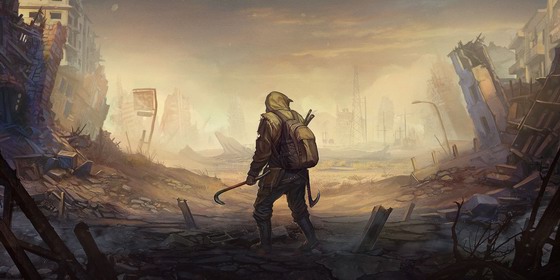
The wasteland that awaits our children?
If you got this far hopefully you can now see that anime is a vast topic that plumbs the depths and heights of Japanese culture and beyond. It transcends boundaries, breaks laws and shows you visions of both heaven and hell. It can't be circumscribed, defined or predicted. It satisfies fantasies and acts as a surrogate for a real life. It breaks away on its own in a thousand radical directions while still remaining true to the mainstream. It changes, reinvents itself and grows every year. It has changed society in Japan and it will do so over the rest of the world in the years to come.
Will this rejection of the real world lead to the collapse of civilisation? Wait and see...
If you are interested in getting into this art-form but are unsure which titles to watch you can start by watching all of the titles that I have mentioned in this review. Most of them are classics.
Enjoy!
Warren Mars - March 9, 2021